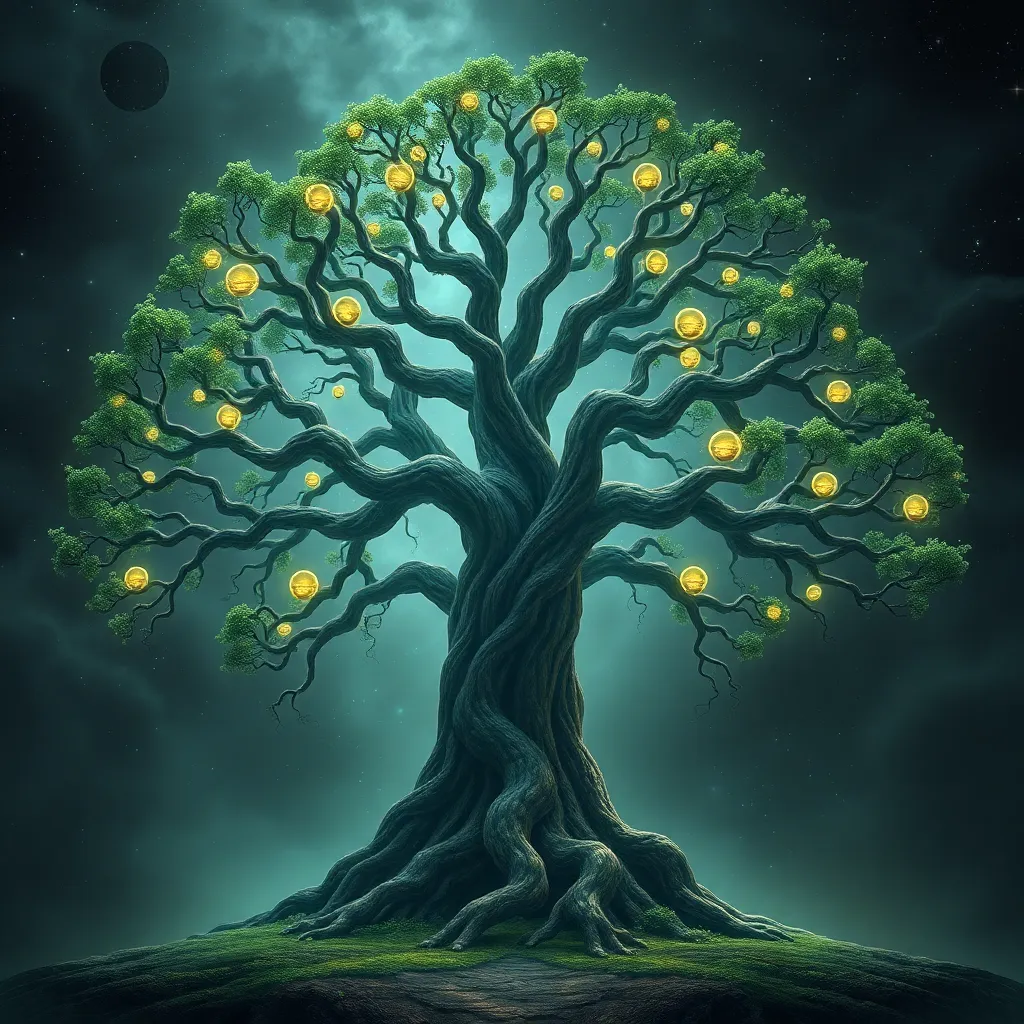The Underworld: Myths That Explore the Depths of Human Emotion
I. Introduction
The concept of the Underworld is a fascinating and complex aspect of mythology across various cultures. Generally, the Underworld refers to a realm where souls go after death, a place that embodies the fears, hopes, and moral values of the living. Myths surrounding the Underworld serve as cultural narratives that help us grapple with profound human emotions such as fear, grief, and the quest for redemption.
This article will explore various cultural interpretations of the Underworld, examining how these myths reflect the depths of human emotion and our understanding of life and death.
II. The Concept of the Underworld Across Cultures
Different cultures have portrayed the Underworld in unique ways, often reflecting their beliefs about life, death, and morality. Here are some notable interpretations:
A. Greek Mythology: Hades and the Journey of Souls
In Greek mythology, the Underworld, ruled by Hades, is where souls go after death. It is divided into several regions, including the Elysian Fields for the virtuous and Tartarus for the wicked. The journey across the river Styx, ferried by Charon, symbolizes the transition from life to death.
B. Egyptian Mythology: Duat and the Judgment of the Heart
The Egyptian Underworld, known as Duat, is a complex realm where the deceased undergo judgment. The heart of the deceased is weighed against the feather of Ma’at, symbolizing truth and justice. A balanced weight allows the soul to enter the afterlife, while an unbalanced weight results in annihilation.
C. Mesopotamian Beliefs: The Land of No Return
In ancient Mesopotamia, the Underworld was viewed as a desolate and dreary land where all souls go, devoid of joy and light. This “Land of No Return” reflects a more pessimistic view of the afterlife, where existence is marked by eternal darkness.
D. Hinduism: Naraka and the Cycle of Rebirth
Hindu beliefs encompass the concept of Naraka, a temporary realm of suffering where souls are punished for their sins before rebirth. This cycle of reincarnation emphasizes the importance of karma and moral living, illustrating a dynamic relationship between life, death, and rebirth.
III. The Underworld as a Reflection of Fear and Anxiety
The Underworld often embodies humanity’s deepest fears and anxieties surrounding death and the afterlife. This section explores how various myths portray these themes:
A. Fear of Death and the Afterlife
Many myths reflect a universal fear of death, presenting the Underworld as a place of uncertainty and despair. These narratives often explore the fear of the unknown, prompting individuals to confront their mortality.
B. Myths Portraying the Underworld as a Place of Punishment
- The Greek Tartarus, where the wicked are eternally punished.
- The Egyptian Duat, where unworthy souls face severe consequences.
- Christian depictions of Hell, representing ultimate punishment for sin.
C. The Role of Divine Judgment in Shaping Moral Behavior
Myths featuring divine judgment serve to reinforce societal morals. They illustrate the consequences of one’s actions, promoting ethical behavior through fear of punishment in the afterlife.
IV. The Underworld and the Theme of Loss and Grief
The Underworld is often a powerful symbol of loss and grief, as many myths depict the mourning process as a journey into darkness.
A. Myths That Illustrate the Mourning Process
Stories such as those of Orpheus and Eurydice highlight the deep emotional struggles associated with loss, illustrating how love can transcend even death.
B. The Symbolism of Descent into the Underworld as a Metaphor for Personal Loss
The act of descending into the Underworld is often a metaphor for confronting personal grief. This journey reflects the emotional turmoil one experiences during the grieving process.
C. Case Studies: Orpheus and Eurydice, Inanna and Dumuzid
- Orpheus and Eurydice: Orpheus’s descent to retrieve his beloved symbolizes the lengths to which love drives individuals to confront death.
- Inanna and Dumuzid: Inanna’s journey to the Underworld and her eventual return highlights themes of loss and the cyclical nature of life and death.
V. Redemption and Transformation in the Underworld
Many myths depict the Underworld not just as a place of despair but also as a realm of transformation and redemption.
A. Myths That Depict Journeys of Self-Discovery and Healing
Characters who journey to the Underworld often emerge transformed, having faced their fears and undergone profound personal growth.
B. The Role of Trials and Tribulations in Personal Growth
The challenges faced in the Underworld serve as catalysts for change, encouraging characters to confront their inner demons and evolve.
C. Examples: Dante’s Inferno and the Concept of Purgation
Dante Alighieri’s “Inferno” illustrates a journey through the Underworld that emphasizes moral retribution and the potential for redemption, showcasing the transformative power of confronting one’s past.
VI. The Underworld as a Space for Confronting Inner Demons
The Underworld can also be interpreted as a psychological landscape where individuals confront their inner demons.
A. Psychological Interpretations of the Underworld
From a psychological standpoint, the Underworld represents the subconscious mind, where repressed fears and traumas reside.
B. Myths That Explore Themes of Addiction, Despair, and Redemption
Myths featuring protagonists who struggle with addiction or despair often depict their journeys through the Underworld as necessary confrontations with their darkest fears, leading to eventual redemption.
C. The Journey of Heroes Facing Their Darkest Fears
Many heroic narratives involve a descent into the Underworld, serving as a powerful metaphor for the struggle against personal demons and the quest for self-acceptance.
VII. The Feminine Perspective: Goddesses of the Underworld
Prominent goddesses associated with the Underworld provide a unique perspective on the themes of life, death, and emotional depth.
A. Overview of Prominent Goddesses (Persephone, Hecate, Ereshkigal)
- Persephone: The duality of life and death as she transitions between the Underworld and the living world.
- Hecate: The goddess of magic and witchcraft, representing the mysteries of the Underworld.
- Ereshkigal: The ruler of the Underworld in Mesopotamian mythology, symbolizing the power of death.
B. Exploration of Feminine Power and Emotional Depth in Underworld Myths
These goddesses embody the complexity of feminine power, illustrating how themes of grief, loss, and transformation are interwoven with the essence of womanhood.
C. The Interplay Between Life and Death in Maternal Figures
The maternal aspect of these goddesses often reflects the cyclical nature of life and death, emphasizing the nurturing and destructive forces that coexist within feminine divinity.
VIII. The Underworld in Contemporary Culture
Modern representations of the Underworld in literature, film, and art continue to explore its emotional depths and cultural significance.
A. Representation of the Underworld in Literature, Film, and Art
Contemporary works often reinterpret ancient myths, presenting the Underworld as a space for personal exploration and emotional confrontation.
B. Analysis of Modern Adaptations of Ancient Myths
Films like “Hercules” and “What Dreams May Come” illustrate the Underworld’s rich symbolism, adapting ancient narratives to resonate with modern audiences.
C. Reflection of Current Social and Emotional Issues Through the Lens of the Underworld
The Underworld serves as a metaphor for contemporary struggles, including mental health issues, loss, and the quest for meaning in a chaotic world.
IX. The Impact of Underworld Myths on Human Emotion
Underworld



